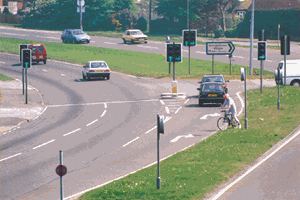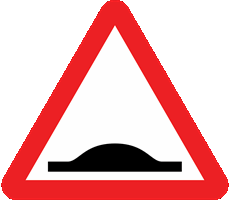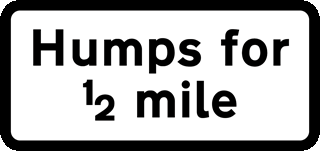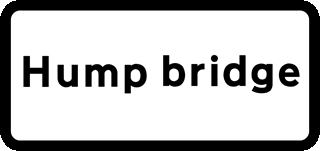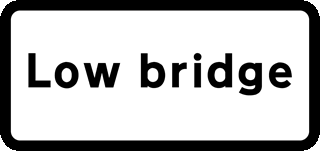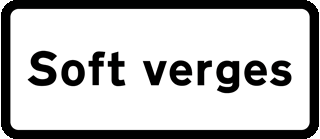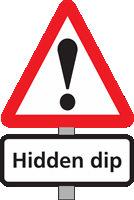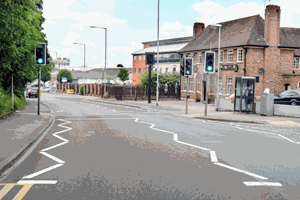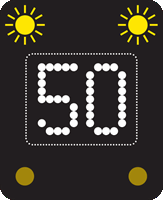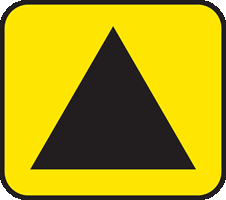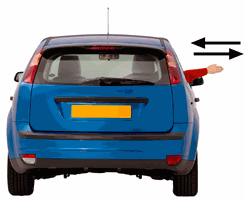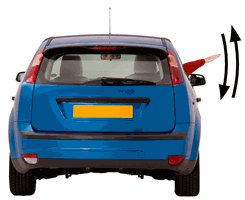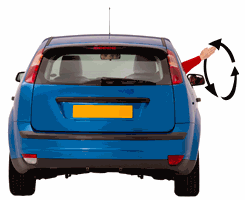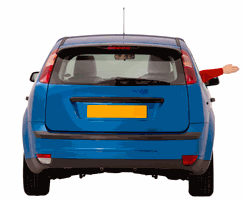
Car Mock Test 3
You have 57 minutes to answer 50 multiple choice driving theory test questions from the latest 2024 question bank. At least 43 out of 50 questions must be answered correctly in order to pass the test. Answers may be reviewed after each question or you can wait until the end of the test for your final score. Good luck!
Reveal all questions for this test ▼
Correct Answer: B
Explanation: Look at the picture carefully and try to imagine you're there. The cyclist in this picture appears to be trying to cross the road. You must be able to deal with the unexpected, especially when you're approaching a hazardous junction. Look well ahead to give yourself time to deal with any hazards.
Explanation: Look at the picture carefully and try to imagine you're there. The cyclist in this picture appears to be trying to cross the road. You must be able to deal with the unexpected, especially when you're approaching a hazardous junction. Look well ahead to give yourself time to deal with any hazards.
2. What should you do if a driver pulls out of a side road in front of you, causing you to brake hard?
Mark one answer
B
C
D
Correct Answer: B
Explanation: Be tolerant if a vehicle emerges and you have to brake quickly. Anyone can make a mistake, so don't react aggressively. Be alert where there are side roads and be especially careful where there are parked vehicles, because these can make it difficult for emerging drivers to see you.
Explanation: Be tolerant if a vehicle emerges and you have to brake quickly. Anyone can make a mistake, so don't react aggressively. Be alert where there are side roads and be especially careful where there are parked vehicles, because these can make it difficult for emerging drivers to see you.
B
C
D
Correct Answer: A
Explanation: Large vehicles can hide other vehicles that are overtaking - especially motorcycles. You need to be aware of the possibility of hidden vehicles and not assume that it's safe to turn.
Explanation: Large vehicles can hide other vehicles that are overtaking - especially motorcycles. You need to be aware of the possibility of hidden vehicles and not assume that it's safe to turn.
Correct Answer: A
Explanation: Road humps are used to slow down traffic. They're found in places where there are often pedestrians, such as
Explanation: Road humps are used to slow down traffic. They're found in places where there are often pedestrians, such as
- shopping areas
- near schools
- residential areas.
Correct Answer: D
Explanation: Travelling at the national speed limit doesn't allow you to hog the right-hand lane. Always use the left-hand lane whenever possible. When leaving a motorway, get into the left-hand lane well before your exit. Reduce your speed on the slip road and look out for sharp bends or curves and traffic queuing at roundabouts.
Explanation: Travelling at the national speed limit doesn't allow you to hog the right-hand lane. Always use the left-hand lane whenever possible. When leaving a motorway, get into the left-hand lane well before your exit. Reduce your speed on the slip road and look out for sharp bends or curves and traffic queuing at roundabouts.
6. Which vehicles aren't allowed to use the right-hand lane of a three-lane motorway?
Mark one answer
B
C
D
Correct Answer: D
Explanation: On the motorway, any vehicle towing a trailer is restricted to 60 mph. It isn't allowed in the right-hand lane, as it might hold up faster-moving traffic that wishes to overtake in that lane.
Explanation: On the motorway, any vehicle towing a trailer is restricted to 60 mph. It isn't allowed in the right-hand lane, as it might hold up faster-moving traffic that wishes to overtake in that lane.
7. You're travelling along a motorway. Where would you find a crawler or climbing lane?
Mark one answer
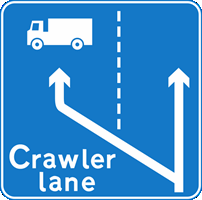
B
C
D
Correct Answer: D
Explanation: Large, slow-moving vehicles can hinder the progress of other traffic. On a steep gradient, an extra crawler lane may be provided for slow-moving vehicles to allow faster-moving traffic to flow more easily.
Explanation: Large, slow-moving vehicles can hinder the progress of other traffic. On a steep gradient, an extra crawler lane may be provided for slow-moving vehicles to allow faster-moving traffic to flow more easily.
Correct Answer: B
Explanation: The 'no right turn' sign may be used to warn road users that there's a 'no entry' prohibition on a road to the right ahead.
Explanation: The 'no right turn' sign may be used to warn road users that there's a 'no entry' prohibition on a road to the right ahead.
Correct Answer: A
Explanation: You won't be able to see any hazards that might be hidden in the dip. As well as oncoming traffic, the dip may conceal
Explanation: You won't be able to see any hazards that might be hidden in the dip. As well as oncoming traffic, the dip may conceal
- cyclists
- horse riders
- parked vehicles
- pedestrians
Correct Answer: A
Explanation: The approach to, and exit from, a pedestrian crossing is marked with zigzag lines. You mustn't park on them or overtake the leading vehicle when approaching the crossing. Parking here would block the view for pedestrians and approaching traffic.
Explanation: The approach to, and exit from, a pedestrian crossing is marked with zigzag lines. You mustn't park on them or overtake the leading vehicle when approaching the crossing. Parking here would block the view for pedestrians and approaching traffic.
Correct Answer: C
Explanation: Look out for signs above your lane or on the central reservation. These will give you important information or warnings about the road ahead. To allow for the high speed of motorway traffic, these signs may light up some distance from any hazard. Don't ignore the signs just because the road looks clear to you.
Explanation: Look out for signs above your lane or on the central reservation. These will give you important information or warnings about the road ahead. To allow for the high speed of motorway traffic, these signs may light up some distance from any hazard. Don't ignore the signs just because the road looks clear to you.
Correct Answer: B
Explanation: When a diversion route has been put in place, drivers are advised to follow a symbol, which may be a black triangle, square, circle or diamond shape on a yellow background.
Explanation: When a diversion route has been put in place, drivers are advised to follow a symbol, which may be a black triangle, square, circle or diamond shape on a yellow background.
13. What colour are the reflective studs between the hard shoulder and the left-hand lane of a motorway?
Mark one answer
B
C
D
Correct Answer: C
Explanation: Red studs are placed between the edge of the carriageway and the hard shoulder. Where slip roads leave or join the motorway, the studs are green.
Explanation: Red studs are placed between the edge of the carriageway and the hard shoulder. Where slip roads leave or join the motorway, the studs are green.
14. You're on a three-lane motorway. Which lane are you in if there are red reflective studs on your left and white ones to your right?
Mark one answer
B
C
D
Correct Answer: A
Explanation: The colours of the reflective studs on the motorway and their locations are
Explanation: The colours of the reflective studs on the motorway and their locations are
- red - between the hard shoulder and the carriageway
- white - between lanes
- amber - between the carriageway and the central reservation
- green - along slip-road exits and entrances
- bright green/yellow - at roadworks and contraflow systems.
15. You're looking for somewhere to safely park your vehicle. Where would you choose to park?
Mark one answer
B
C
D
Correct Answer: B
Explanation: It may be tempting to park where you shouldn't while you run a quick errand. Careless parking is a selfish act and could endanger other road users.
Explanation: It may be tempting to park where you shouldn't while you run a quick errand. Careless parking is a selfish act and could endanger other road users.
Correct Answer: D
Explanation: Never sound your vehicle's horn aggressively. You mustn't sound it when driving in a built-up area between 11.30 pm and 7.00 am, or when you're stationary, unless another road user poses a danger. Don't scare animals by sounding your horn.
Explanation: Never sound your vehicle's horn aggressively. You mustn't sound it when driving in a built-up area between 11.30 pm and 7.00 am, or when you're stationary, unless another road user poses a danger. Don't scare animals by sounding your horn.
Correct Answer: A
Explanation: The names of towns and cities may be painted on the road at busy junctions and complex road systems. They guide you into the correct lane in good time, allowing traffic to flow more freely.
Explanation: The names of towns and cities may be painted on the road at busy junctions and complex road systems. They guide you into the correct lane in good time, allowing traffic to flow more freely.
18. What should you do when you're following a motorcyclist along a road that has a poor surface?
Mark one answer
B
C
D
Correct Answer: A
Explanation: To avoid being unbalanced, a motorcyclist might swerve to avoid potholes and bumps in the road. Be prepared for this and allow them extra space.
Explanation: To avoid being unbalanced, a motorcyclist might swerve to avoid potholes and bumps in the road. Be prepared for this and allow them extra space.
19. You're in the right-hand lane of a three-lane motorway. What do these overhead signs mean?
Mark one answer

B
C
D
Correct Answer: B
Explanation: You must obey these signs even if there appear to be no problems ahead. There could be queuing traffic or another hazard that you can't see yet.
Explanation: You must obey these signs even if there appear to be no problems ahead. There could be queuing traffic or another hazard that you can't see yet.
20. You're travelling along a motorway. When are you allowed to overtake on the left?
Mark one answer
B
C
D
Correct Answer: A
Explanation: Never overtake on the left, unless the traffic is moving in queues and the queue on your right is moving more slowly than the one you're in.
Explanation: Never overtake on the left, unless the traffic is moving in queues and the queue on your right is moving more slowly than the one you're in.
Correct Answer: C
Explanation: When you see this sign, look out for any direction signs and judge whether you need to signal your intentions. Do this in good time so that other road users approaching the roundabout know what you're planning to do.
Explanation: When you see this sign, look out for any direction signs and judge whether you need to signal your intentions. Do this in good time so that other road users approaching the roundabout know what you're planning to do.
Correct Answer: A
Explanation: If you want to keep a vehicle untaxed and off the public road, you must make a SORN. It's an offence not to do so. Your SORN is valid until your vehicle is taxed, sold or scrapped.
Explanation: If you want to keep a vehicle untaxed and off the public road, you must make a SORN. It's an offence not to do so. Your SORN is valid until your vehicle is taxed, sold or scrapped.
B
C
D
Correct Answer: A
Explanation: Using the controls smoothly can reduce fuel consumption by about 15%, as well as reducing wear and tear on your vehicle. Plan ahead and anticipate changes of speed well in advance. This will reduce the need to accelerate rapidly or brake sharply.
Explanation: Using the controls smoothly can reduce fuel consumption by about 15%, as well as reducing wear and tear on your vehicle. Plan ahead and anticipate changes of speed well in advance. This will reduce the need to accelerate rapidly or brake sharply.
24. You stop on the hard shoulder of a motorway and use the emergency telephone. Where's the best place to wait for help to arrive?
Mark one answer
B
C
D
Correct Answer: C
Explanation: When you're on the hard shoulder, you're at risk of being injured by motorway traffic. The safest place to wait is away from the carriageway, but near enough to see the emergency services arriving.
Explanation: When you're on the hard shoulder, you're at risk of being injured by motorway traffic. The safest place to wait is away from the carriageway, but near enough to see the emergency services arriving.
Correct Answer: B
Explanation: Police officers may need to direct traffic; for example, at a junction where the traffic lights have broken down. Check your copy of The Highway Code for the signals that they use.
Explanation: Police officers may need to direct traffic; for example, at a junction where the traffic lights have broken down. Check your copy of The Highway Code for the signals that they use.
B
C
D
Correct Answer: A
Explanation: If possible, lay the casualty down. Protect yourself from exposure to blood and, when you're sure there's nothing in the wound, apply firm pressure using clean material.
Explanation: If possible, lay the casualty down. Protect yourself from exposure to blood and, when you're sure there's nothing in the wound, apply firm pressure using clean material.
27. A casualty isn't breathing normally and needs CPR. At what rate should you press down and release on the centre of their chest?
Mark one answer
B
C
D
Correct Answer: B
Explanation: If a casualty isn't breathing normally, cardiopulmonary resuscitation (CPR) may be needed to maintain circulation. Place two hands on the centre of the chest and press down hard and fast - around 5-6 centimetres and about twice a second.
Explanation: If a casualty isn't breathing normally, cardiopulmonary resuscitation (CPR) may be needed to maintain circulation. Place two hands on the centre of the chest and press down hard and fast - around 5-6 centimetres and about twice a second.
Correct Answer: D
Explanation: Your vehicle must have valid insurance cover before you can tax it. If required, it will also need to have a valid MOT certificate. You can tax your vehicle online, by phone or at certain post offices.
Explanation: Your vehicle must have valid insurance cover before you can tax it. If required, it will also need to have a valid MOT certificate. You can tax your vehicle online, by phone or at certain post offices.
Correct Answer: B
Explanation: Using a motor vehicle on the road illegally carries a heavy fine and can lead to penalty points on your driving licence. You must
Explanation: Using a motor vehicle on the road illegally carries a heavy fine and can lead to penalty points on your driving licence. You must
- hold a valid driving licence for the class of vehicle you're using
- be insured to drive the vehicle.
Correct Answer: B
Explanation: To go straight ahead at a roundabout, you should normally approach in the left-hand lane, but check the road markings. At some roundabouts, the left lane on approach is marked 'left turn only', so make sure you use the correct lane to go ahead. You won't normally need to signal as you approach, but signal before you leave the roundabout, as other road users need to know your intentions.
Explanation: To go straight ahead at a roundabout, you should normally approach in the left-hand lane, but check the road markings. At some roundabouts, the left lane on approach is marked 'left turn only', so make sure you use the correct lane to go ahead. You won't normally need to signal as you approach, but signal before you leave the roundabout, as other road users need to know your intentions.
31. A police officer asks to see your documents. You don't have them with you. How many days do you have to produce them at a police station?
Mark one answer
B
C
D
Correct Answer: D
Explanation: You don't have to carry your vehicle's documents wherever you go. If a police officer asks to see them and you don't have them with you, you may be asked to produce them at a police station within 7 days.
Explanation: You don't have to carry your vehicle's documents wherever you go. If a police officer asks to see them and you don't have them with you, you may be asked to produce them at a police station within 7 days.
32. An adult casualty isn't breathing. To maintain circulation, CPR should be given. What's the correct depth to press down on their chest?
Mark one answer
B
C
D
Correct Answer: D
Explanation: An adult casualty isn't breathing normally. To maintain circulation, place two hands on the centre of the chest. Then press down hard and fast - around 5-6 centimetres and about twice a second.
Explanation: An adult casualty isn't breathing normally. To maintain circulation, place two hands on the centre of the chest. Then press down hard and fast - around 5-6 centimetres and about twice a second.
Correct Answer: C
Explanation: You should carry out frequent checks on all fluid levels but particularly brake fluid. As the brake pads or shoes wear down, the brake-fluid level will drop. If it drops below the minimum mark on the fluid reservoir, air could enter the hydraulic system and lead to a loss of braking efficiency or even complete brake failure.
Explanation: You should carry out frequent checks on all fluid levels but particularly brake fluid. As the brake pads or shoes wear down, the brake-fluid level will drop. If it drops below the minimum mark on the fluid reservoir, air could enter the hydraulic system and lead to a loss of braking efficiency or even complete brake failure.
B
C
D
Correct Answer: A
Explanation: When it's foggy, use your headlights on dipped beam. This will help you see and be seen by other road users. If visibility is seriously reduced, consider using front and rear fog lights if you have them. Keep to a sensible speed and don't follow the vehicle in front too closely. If the road is wet and slippery, you'll need to allow twice the normal stopping distance.
Explanation: When it's foggy, use your headlights on dipped beam. This will help you see and be seen by other road users. If visibility is seriously reduced, consider using front and rear fog lights if you have them. Keep to a sensible speed and don't follow the vehicle in front too closely. If the road is wet and slippery, you'll need to allow twice the normal stopping distance.
35. A collision has just happened. An injured person is lying in a busy road. What's the first thing you should do?
Mark one answer
B
C
D
Correct Answer: D
Explanation: The most immediate danger is further collisions and fire. You could warn other traffic by switching on hazard warning lights, displaying an advance warning triangle or sign (but not on a motorway), or by any other means that doesn't put you or others at risk.
Explanation: The most immediate danger is further collisions and fire. You could warn other traffic by switching on hazard warning lights, displaying an advance warning triangle or sign (but not on a motorway), or by any other means that doesn't put you or others at risk.
Correct Answer: A
Explanation: By driving all four wheels, the vehicle has maximum grip on the road. This grip is especially helpful when travelling on slippery or uneven surfaces. However, having four-wheel drive doesn't replace the skills you need to drive safely.
Explanation: By driving all four wheels, the vehicle has maximum grip on the road. This grip is especially helpful when travelling on slippery or uneven surfaces. However, having four-wheel drive doesn't replace the skills you need to drive safely.
37. You're driving towards this level crossing. What would be the first warning of an approaching train?
Mark one answer
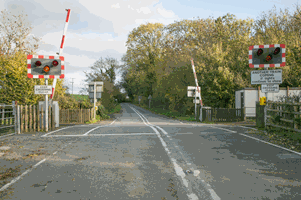
B
C
D
Correct Answer: A
Explanation: The steady amber light will be followed by twin flashing red lights that mean you must stop. An alarm will also sound to alert you to the fact that a train is approaching.
Explanation: The steady amber light will be followed by twin flashing red lights that mean you must stop. An alarm will also sound to alert you to the fact that a train is approaching.
38. You're driving on a road with several lanes. What do these signs above the lanes mean?
Mark one answer

B
C
D
Correct Answer: A
Explanation: On some busy roads, lane control signals are used to vary the number of lanes available to give priority to the main traffic flow. A green arrow indicates that the lane is available to traffic facing the signal. A white diagonal arrow means that the lane is closed ahead and traffic should move to the next lane on the left. A red cross means that the lane is closed to traffic facing the signal.
Explanation: On some busy roads, lane control signals are used to vary the number of lanes available to give priority to the main traffic flow. A green arrow indicates that the lane is available to traffic facing the signal. A white diagonal arrow means that the lane is closed ahead and traffic should move to the next lane on the left. A red cross means that the lane is closed to traffic facing the signal.
39. What advice should you give to a driver who has had a few alcoholic drinks at a party?
Mark one answer
B
C
D
Correct Answer: B
Explanation: Drinking black coffee or waiting a few hours won't make any difference. Alcohol takes time to leave the body. A driver who has been drinking should go home by public transport or taxi. They might even be unfit to drive the following morning.
Explanation: Drinking black coffee or waiting a few hours won't make any difference. Alcohol takes time to leave the body. A driver who has been drinking should go home by public transport or taxi. They might even be unfit to drive the following morning.
40. You're about to reverse into a side road. What should you do if a pedestrian is waiting to cross behind your car?
Mark one answer
B
C
D
Correct Answer: A
Explanation: If you need to reverse into a side road, try to find a place that's free from traffic and pedestrians. Look all around before and during the manoeuvre. Stop and give way to any pedestrians who want to cross behind you. Avoid waving them across, sounding the horn, flashing your lights or giving any signals that could mislead them and create a dangerous situation.
Explanation: If you need to reverse into a side road, try to find a place that's free from traffic and pedestrians. Look all around before and during the manoeuvre. Stop and give way to any pedestrians who want to cross behind you. Avoid waving them across, sounding the horn, flashing your lights or giving any signals that could mislead them and create a dangerous situation.
41. You're waiting at a level crossing. What should you do if the red warning lights continue to flash after a train has passed by?
Mark one answer
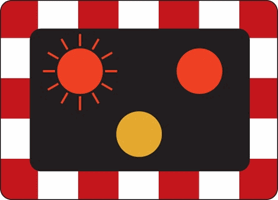
B
C
D
Correct Answer: A
Explanation: At a level crossing, flashing red lights mean you must stop. If the train passes but the lights keep flashing, wait. Another train may be coming.
Explanation: At a level crossing, flashing red lights mean you must stop. If the train passes but the lights keep flashing, wait. Another train may be coming.
Correct Answer: C
Explanation: There may be occasions when other road users are unable to see your indicator, such as in bright sunlight or at a busy, complicated junction. In these cases, an arm signal will help others to understand your intentions.
Explanation: There may be occasions when other road users are unable to see your indicator, such as in bright sunlight or at a busy, complicated junction. In these cases, an arm signal will help others to understand your intentions.
Correct Answer: C
Explanation: Wasting fuel costs you money and also causes unnecessary pollution. Ensuring your tyres are correctly inflated, avoiding carrying unnecessary weight and removing a roof rack that's not in use will all help to reduce your fuel consumption.
Explanation: Wasting fuel costs you money and also causes unnecessary pollution. Ensuring your tyres are correctly inflated, avoiding carrying unnecessary weight and removing a roof rack that's not in use will all help to reduce your fuel consumption.
Correct Answer: A
Explanation: By looking well ahead and recognising hazards in good time, you can avoid late and heavy braking. Watch the traffic flow and look well ahead for potential hazards so you can control your speed in good time. Avoid over-revving the engine and accelerating harshly, as this increases wear to the engine and uses more fuel.
Explanation: By looking well ahead and recognising hazards in good time, you can avoid late and heavy braking. Watch the traffic flow and look well ahead for potential hazards so you can control your speed in good time. Avoid over-revving the engine and accelerating harshly, as this increases wear to the engine and uses more fuel.
B
C
D
Correct Answer: A
Explanation: If you're driving in high winds, be aware that the conditions might make a motorcyclist (or cyclist) swerve or wobble. Take this into consideration if you're following or wish to overtake a two-wheeled vehicle.
Explanation: If you're driving in high winds, be aware that the conditions might make a motorcyclist (or cyclist) swerve or wobble. Take this into consideration if you're following or wish to overtake a two-wheeled vehicle.
Correct Answer: B
Explanation: Both recreational drugs and prescribed medicine can affect your concentration. It's also an offence to drive with certain drugs in your body and a positive test could lead to a conviction.
Explanation: Both recreational drugs and prescribed medicine can affect your concentration. It's also an offence to drive with certain drugs in your body and a positive test could lead to a conviction.
Correct Answer: D
Explanation: Coasting is when you allow the vehicle to freewheel in neutral or with the clutch pedal depressed. When travelling downhill, this will cause the vehicle to gain speed more quickly as you lose the benefits of engine braking; it may even lead to a loss of control. You shouldn't coast, especially when approaching hazards such as junctions or bends and when travelling downhill.
Explanation: Coasting is when you allow the vehicle to freewheel in neutral or with the clutch pedal depressed. When travelling downhill, this will cause the vehicle to gain speed more quickly as you lose the benefits of engine braking; it may even lead to a loss of control. You shouldn't coast, especially when approaching hazards such as junctions or bends and when travelling downhill.
Correct Answer: A
Explanation: If you have adult passengers, it's their responsibility to wear a seat belt, but you should still remind them to use one as they get in the car. It's your responsibility to make sure that all children in your car are secured with an appropriate restraint. Exemptions are allowed for those with a medical exemption certificate.
Explanation: If you have adult passengers, it's their responsibility to wear a seat belt, but you should still remind them to use one as they get in the car. It's your responsibility to make sure that all children in your car are secured with an appropriate restraint. Exemptions are allowed for those with a medical exemption certificate.
49. What should you do if you start to feel drowsy while you're driving on a motorway?
Mark one answer
B
C
D
Correct Answer: A
Explanation: Never stop on the hard shoulder to rest. If there's no service area for several miles, leave the motorway at the next exit and find somewhere safe and legal to pull over.
Explanation: Never stop on the hard shoulder to rest. If there's no service area for several miles, leave the motorway at the next exit and find somewhere safe and legal to pull over.
50. What does it mean if the Electronic Stability Control (ESC) indicator lamp lights up while you're driving?
Mark one answer
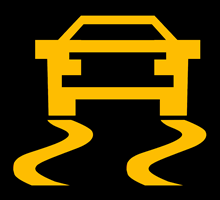
B
C
D
Correct Answer: B
Explanation: ESC is a computer controlled technology that detects reduced traction and automatically makes corrective adjustments to prevent loss of control. The ESC lamp comes on to alert the driver that the system has activated and the car is approaching its handling limits. It's a powerful driver aid but it cannot save a car once its traction limits have been exceeded.
Explanation: ESC is a computer controlled technology that detects reduced traction and automatically makes corrective adjustments to prevent loss of control. The ESC lamp comes on to alert the driver that the system has activated and the car is approaching its handling limits. It's a powerful driver aid but it cannot save a car once its traction limits have been exceeded.
Read less
These 15 mock tests cover the entire 2022 official DVSA revision bank. Like the real theory test, each mock is 57 minutes long and the pass mark is 43 out of 50. Questions are randomly selected from 14 topics. You also have the option of practicing in “test view” which closely resembles the real theory test.
There are 14 topics which you must cover when preparing for your driving theory test. Below are mock tests for each topic.
As of 28 September 2020, three out of the 50 questions in your theory test will be based on a short video clip. Below are 9 video clip tests for you to practice with.
As of 28 September 2020, case studies were removed driving theory test. However, we have retained them for you to practice with.


